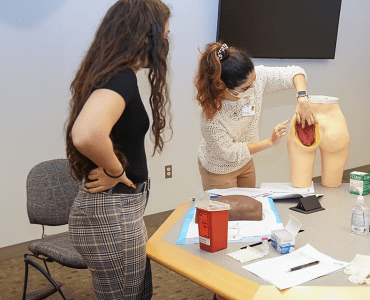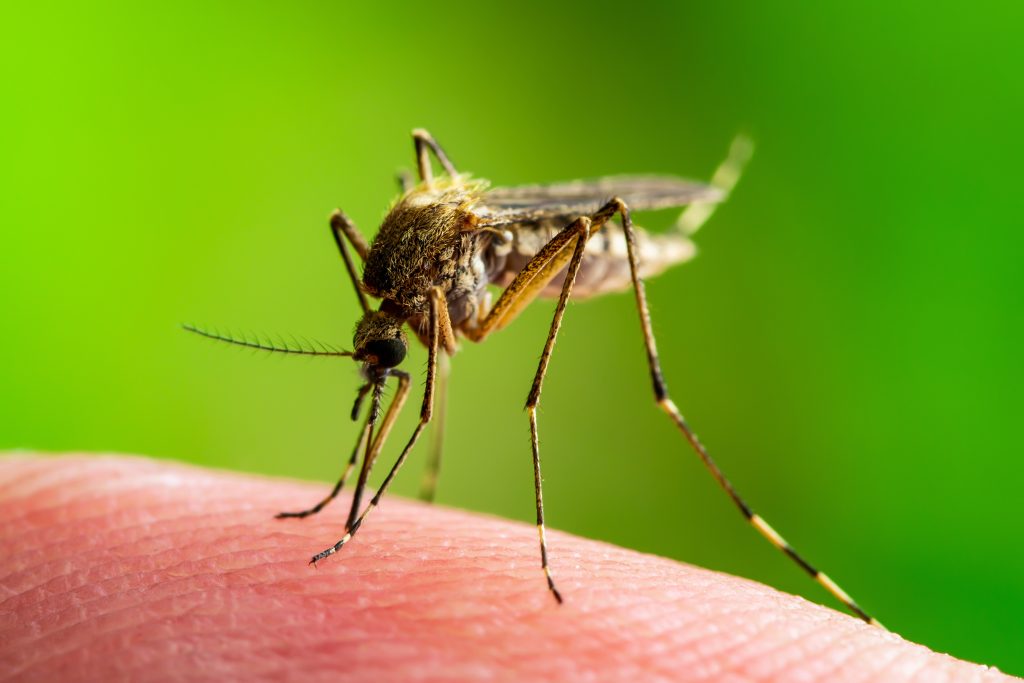
In the United States, most of us look at mosquitoes and their bites as an itchy annoyance. But in other parts of the world, they can be much more deadly.
More than 240 million people worldwide are infected each year with malaria, according to World Health Organization (WHO) estimates. Researchers at the University of Maryland School of Medicine’s (UMSOM) Center for Vaccine Development and Global Health (CVD) have been leading the fight to stop the spread of the life-threatening illness, which is caused by parasites transmitted to people through the bites of infected female mosquitos.
Despite global declines in malaria morbidity and mortality over the last two decades, death rates have risen in recent years, and this disease remains a significant public health burden in sub-Saharan Africa, which carries a disproportionately high share of the global malaria burden. In 2021, this part of the world saw 95 percent of malaria cases and 96 percent of all malaria deaths, according to WHO estimates. Among those mortalities, children younger than 5 years old accounted for roughly 80 percent of all malaria deaths in the region.
While malaria is a serious illness impacting the most vulnerable populations including children and pregnant women, efforts to prevent and cure the disease have only been partially effective. Researchers at CVD have been applying the most sophisticated scientific approaches and novel discoveries to prevent and control malaria. In recent years, CVD researchers have made significant progress in measuring and controlling the spread of malaria, testing new treatments and developing vaccines — all key milestones toward ultimately reducing the global burden of this disease.
“Malaria continues to kill hundreds of thousands of children every year. The malaria research and policy communities have made so much progress, but we have now hit a plateau. We need innovative approaches, out-of-the-box thinking, and our best science to finally get rid of this disease. I am proud that our Malaria Research Program leads the way,” said Miriam Laufer, MD, a pediatric infectious disease specialist and director of CVD’s Malaria Research Program.
A Complex Disease
Vaccine development for a range of serious tropical diseases has been successful, but malaria has been particularly challenging, because it is a parasite with a complex life cycle. In recent years, however, there have been significant advancements in malaria vaccine development. For example, WHO in 2021 recommended the RTS,S/AS01 malaria vaccine for broad use among children living in WHO regions with high malaria cases. And while this vaccine provides some protection against malaria, it is only 30 percent effective.
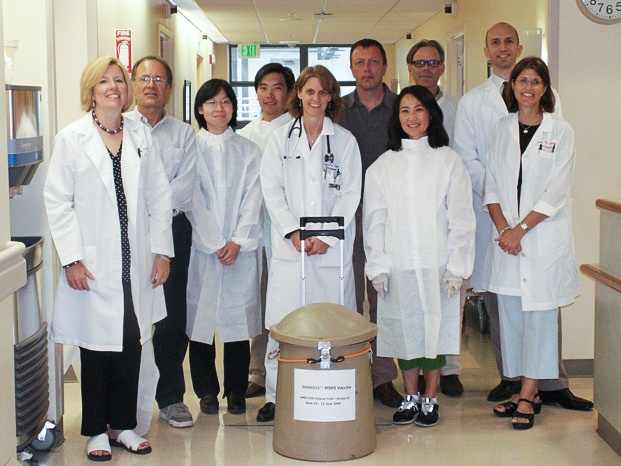
The development of a more effective malaria vaccine is one of the most critical needs to save the lives of children. CVD has led the pioneering trials of many innovative new approaches to prevent malaria. One example is the Plasmodium falciparum sporozoite (PfSPZ) vaccine, made with a live-attenuated form of the malaria parasite — a modified form of the germ that would normally cause disease.
Recent results from CVD’s clinical trial of the three-dose PfSPZ vaccine show promise.
CVD’s research is being conducted in the United States by Kirsten E. Lyke, MD, professor of medicine and director of CVD’s Malaria Vaccine and Challenge Unit, and in international trials in Burkina Faso by Matthew Laurens, MD, MPH, FAAP, a pediatric infectious diseases specialist and director of CVD’s International Clinical Trials Unit. Lyke’s and Laurens’ research has shown that the three-dose vaccine is safe and effective when tested in adults.
The PfSPZ vaccine, manufactured by Rockville, Md.-based Sanaria Inc., provides at least 90 percent protection in challenge studies where volunteers are infected with malaria in a controlled setting.
Laurens’ study, funded by the National Institute of Allergy and Infectious Diseases (NIAID), included 80 participants who were healthy adult men and non-pregnant women. Participants were randomized to receive the PfSPZ vaccine or placebo. The vaccine provided nearly 50 percent protection against clinical disease for up to 18 months.
Importantly, this study included adults who had experienced repeated malaria infections from childhood through adulthood.
“A significant challenge we have faced in developing a malaria vaccine is protecting individuals who have already been infected with malaria. This latest vaccine is showing promise in protecting adults living in malaria-endemic areas such as sub-Saharan Africa, who already have immune responses to malaria parasites,” Laurens said.
Another important part of CVD’s research with the PfSPZ vaccine was to weigh the effectiveness of reducing the number of injections, making dosing more feasible in rural and vulnerable communities.
Next steps for the NIAID-funded research underway include conducting additional clinical trials of the PfSPZ vaccine in groups that would benefit most from vaccine-induced protection, including children, travelers, military personnel, and pregnant women. Researchers are studying how effective the vaccine is when all three doses are administered within a month. Expectations are that a compressed timeline would make vaccines more feasible for travelers and military personnel.
An Effective Vaccine Against Different Malaria Strains
Researchers at CVD and UMSOM’s Institute for Genome Sciences (IGS) have also used the results of the PfSPZ vaccine trials to determine its efficacy against strains of malaria in the field. In this related research, they exposed vaccinated volunteers to malaria in a closely supervised clinical environment, using a strain of malaria that was genetically different from the one used to make the vaccine and from strains found in the geographic region where the vaccine would be administered. This technique allowed scientists to test how well the vaccine works in small numbers of volunteers in a safe, controlled setting and helps gauge how well the vaccine may perform in the field. They also vaccinated research participants in Mali with the same dose of the vaccine to compare observed vaccine efficacy in the field with that in the clinic.

For this study, researchers infected mosquitoes with a Brazilian malarial strain and then exposed U.S. volunteers who had received the PfSPZ vaccine, as well as those who received a placebo, to the bites of infected mosquitos in a controlled clinical setting. Through genomic sequencing, researchers demonstrated that the Brazilian strain differed greatly from 700 strains previously collected from across Africa, including the one used to make the vaccine.
This PfSPZ research included 200 volunteers in four trials — two in the United States and two in Mali. In all four, they observed how many people became infected with malaria, as well as how long it took for them to become infected, comparing clinic to field. At the end of six months, they found the vaccine was just as effective in both populations.
In addition, previous comparisons had shown that the volunteers who had never been exposed to malaria developed more antibodies than those in the field, proving that it would work well in first-time travelers to the area.
The research team included scientists from Sanaria; the Naval Medical Research Center; the University of Tübingen in Germany; the Malaria Research and Training Center in Bamako, Mali; and the Laboratory of Malaria Immunology and Vaccinology at NIAID.
mRNA Vaccines, Monoclonal Antibodies
Also, for the first time, CVD researchers are conducting in-human tests of a malaria vaccine based on the mRNA vaccine platform, which saw advances during the COVID-19 pandemic. Based on Pfizer-BioNTech’s highly effective COVID-19 vaccine, this malaria vaccine trains the human immune system to recognize and combat malaria parasites, stopping parasite development before they can cause malaria illness or transmit malaria to people via mosquitos. If effective, such a vaccine could be used broadly in malaria-endemic regions, as global health policymakers strive to eradicate malaria.
CVD researchers conducted a study using monoclonal antibodies as a new therapy to protect against malaria. For more than 30 years, monoclonal antibodies have transformed the way doctors prevent and treat diseases, ranging from cancer to childhood viral infections.
This was the first time that CVD researched using this type of therapy to treat malaria.
Unlike traditional drugs, monoclonal antibodies are not chemical compounds but are functional human antibodies that boost your immune response. This research was led by Lyke, whose team tested the experimental monoclonal antibody therapy in a challenge study in CVD’s malaria lab in Baltimore.
As part of the research, healthy volunteers were exposed to a controlled strain of malaria and then treated.
Participants were given different doses of the CIS43LS monoclonal antibody at either 5-10 mg/kg or 1 mg/kg. The participants were then bitten by five mosquitoes infected with a Plasmodium falciparum strain of malaria about eight weeks after they were given the dose of the monoclonal antibody. All participants — 29 healthy individuals 18 to 50 years old — were monitored for 24 weeks.
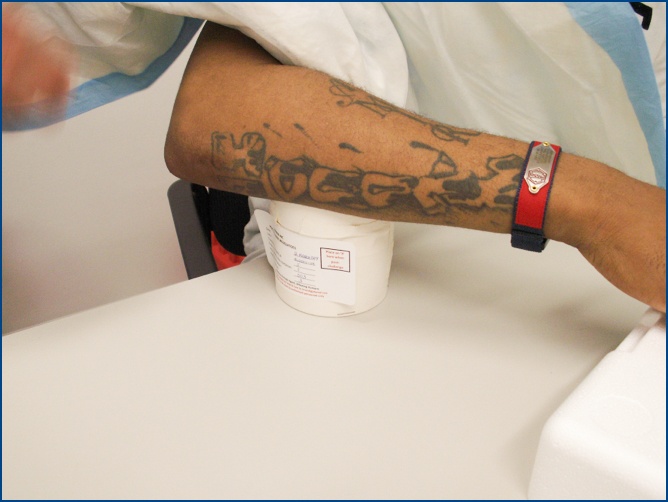
Researchers found that a single dose of CIS43LS at 5-10 mg/kg provided complete protection against a controlled human malaria infection, while there was only partial protection achieved with the smaller 1 mg/kg dose. The eight control participants in the challenge study who did not receive the monoclonal antibody all developed malaria.
Results of this study, also funded by NIAID, showed that the antibody treatment was safe, well-tolerated, and effective in protecting individuals exposed to malaria in a safe, controlled setting. Furthermore, it established that antibodies could effectively be given subcutaneously, meaning that young children could easily be dosed in remote regions of Africa.
“The study shows the potential for using monoclonal antibody therapies to help prevent malarial infection. The research holds promise for providing this treatment in areas of the world where malaria is endemic, and it may serve as a key step in eradicating this disease,” Lyke said.
The CVD research team, which also included Andrea A. Berry, MD, associate professor of pediatrics and medicine, and others in CVD’s Malaria Research Program, says additional research is needed to explore whether this monoclonal antibody therapy could be used for long-term protection. Further study is also needed to determine the best dosage for children and whether monoclonal antibodies can be safely used to protect pregnant women. Clinical trials of the monoclonal antibody therapy are underway in Mali and Kenya.
Controlling and Preventing the Spread of Malaria
Another important part of controlling malaria is measuring and testing the disease burden in populations in malaria-endemic regions. Malaria surveillance and research have largely focused on children younger than 5 and pregnant women, the groups at highest risk of adverse outcomes. But expanding research to other age groups has revealed an underappreciated burden of malaria infection in school-age children.
“Children 6 to 15 years old bear an underappreciated burden of malaria. Across sub-Saharan Africa, the prevalence of infection peaks in this age group,” said Lauren Cohee, MD, assistant professor of pediatrics and a faculty member in CVD’s Malaria Research Program, who conducted this surveillance research.
Cohee and Laufer have been tracking prevalence of malaria in this age group for years. This surveillance is critical because infection in this age group not only threatens child health and education, but it also serves as a source of transmission to others. In an observational study in which 704 students in four Malawian primary schools were screened for Plasmodium falciparum infection using rapid diagnostic tests and treated if they tested positive, significant reductions in infections and specifically the parasite stage required for human-to-mosquito transmission were detected in these schoolchildren, suggesting that decreasing infection in schoolchildren might limit transmission in the community.
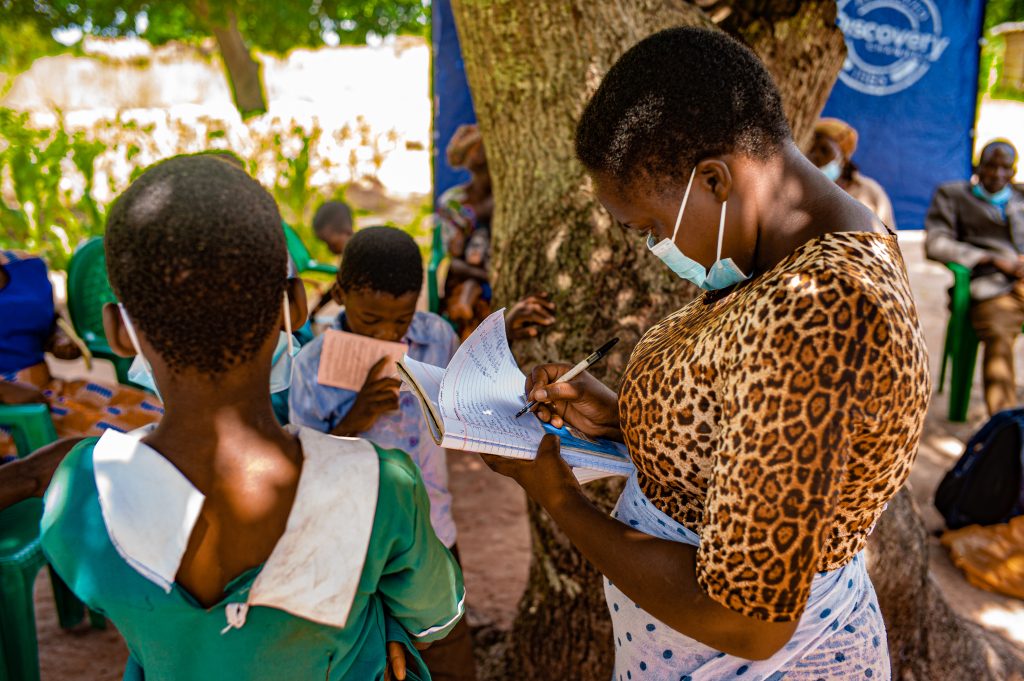
Their research also showed that universal malaria interventions known to be effective, such as bed nets and access to prompt diagnosis and treatment, are least likely to be provided to school-age children compared to other groups. Thus, interventions specifically targeting this age group are needed.
With ever-increasing school enrollment in the malaria endemic world, schools provide ready access to children and are successfully used to address other health concerns such as feeding for nutritional deficiencies and therapies for other serious tropics diseases.
Based in part on results from CVD research in Malawi and a meta-analysis of school-based preventive treatment of malaria led by Cohee and Laufer, WHO included intermittent preventive treatment of malaria in schoolchildren in its 2022 guidelines for malaria control. Cohee is leading clinical trials in Malawi to evaluate approaches to provide anti-malarial drugs to schoolchildren to clear existing infections and prevent new ones.
“Provision of effective anti-malarials to schoolchildren will undoubtedly improve their health by decreasing both clinical malaria disease and anemia. What remains unclear is the extent to which this intervention will improve students’ cognitive function and educational attainment and, by removing sources of transmission, decrease malaria in younger, more vulnerable children,” Cohee said.
January Payne, director of public relations at UMSOM, and Heide Aungst, MA, director of marketing and public relations, IGS, contributed to this article.



